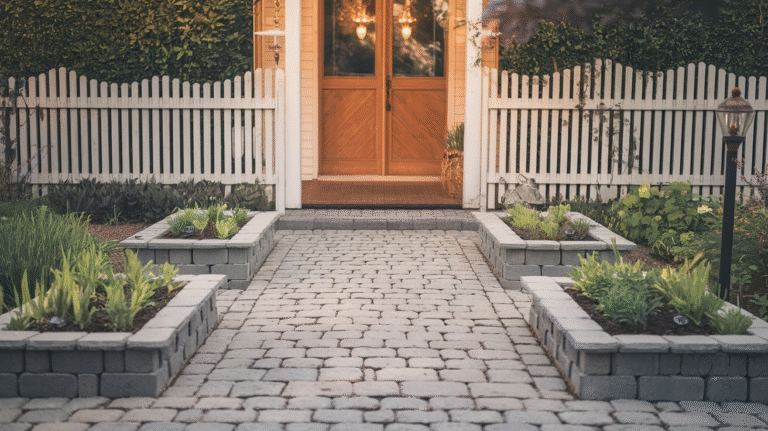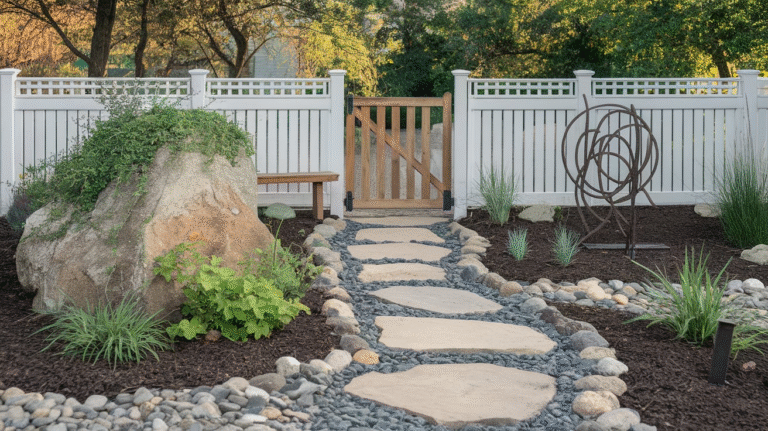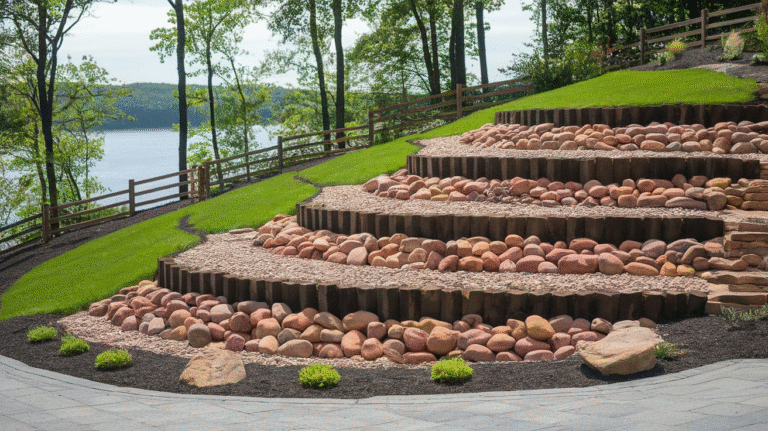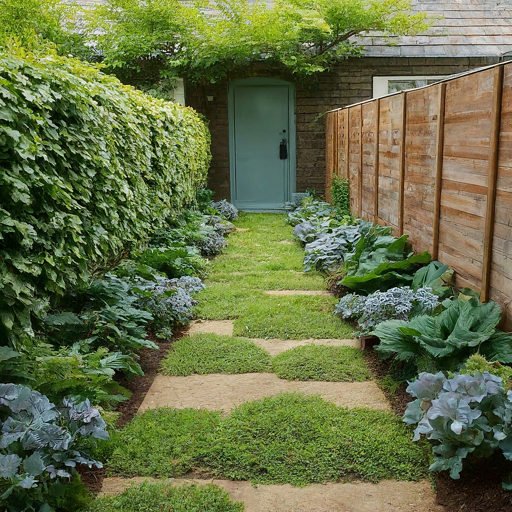20 Privacy Landscaping Ideas
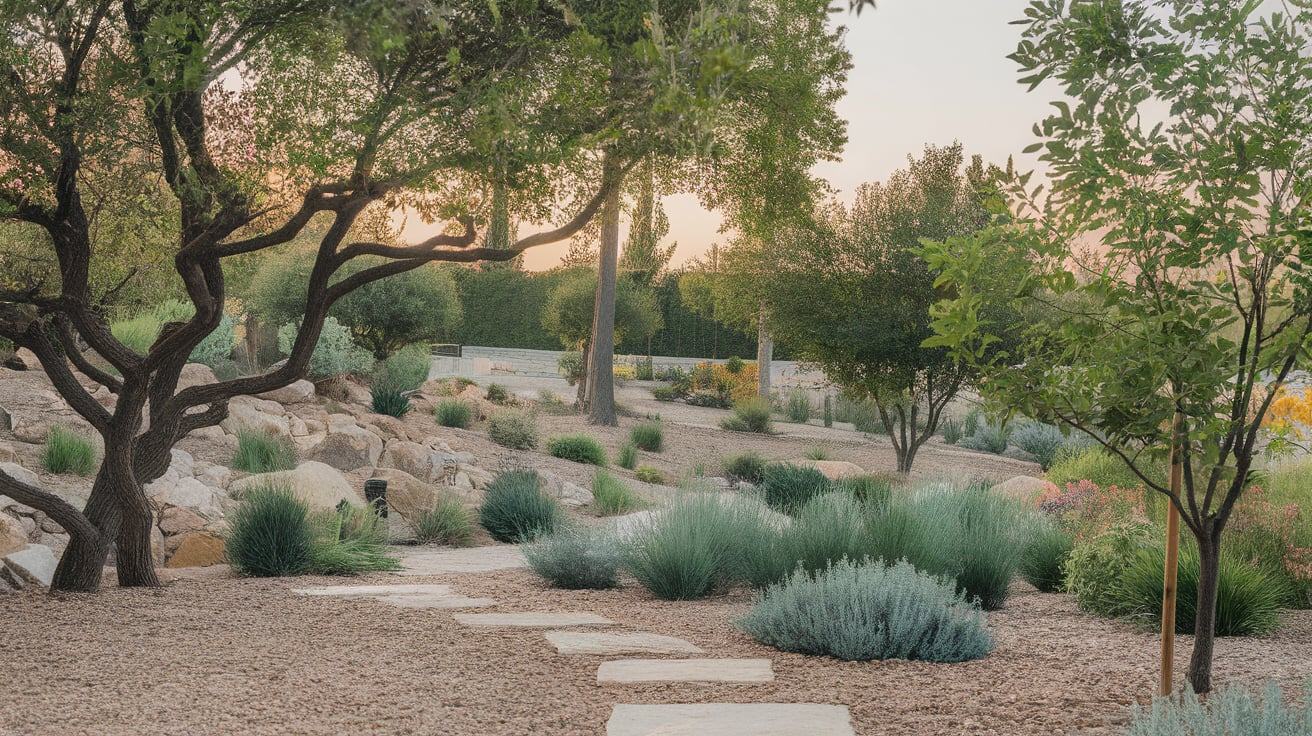
So you’re sipping coffee on your back porch and—bam!—eye contact with the neighbor in his plaid bathrobe.
It’s not a crime, but it’s definitely a vibe killer.
Whether you’re trying to create a peaceful retreat or block out that too-curious window across the fence, privacy landscaping can be your new best friend.
Let’s walk through 20 clever, stylish, and effective privacy landscaping ideas.
These aren’t just hedges and fences—we’re talking layered greenery, sound-blocking solutions, and even a few “why didn’t I think of that?” moments.
Use Evergreens as Living Fences
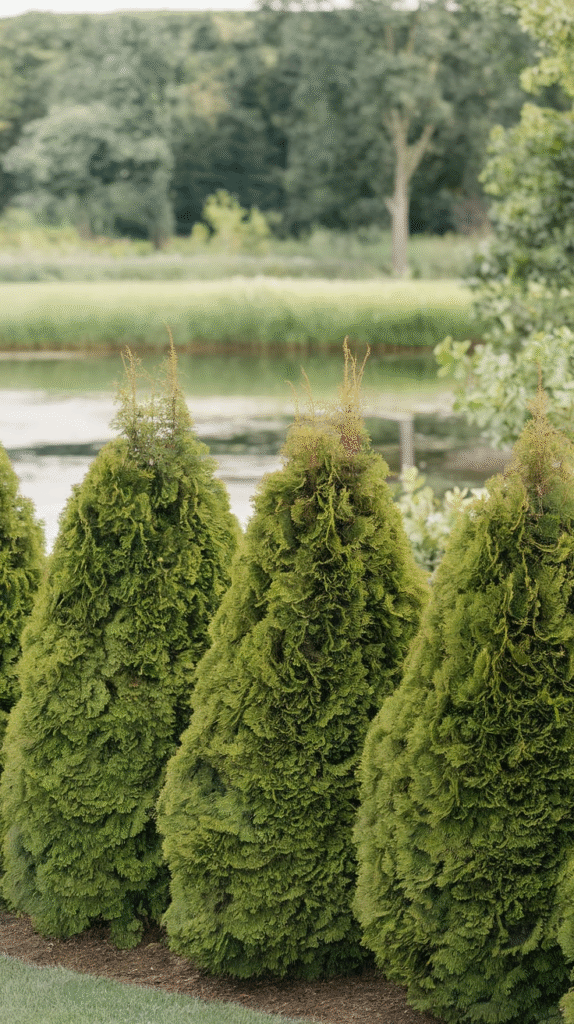
Want year-round privacy? Evergreens are like loyal watchdogs—silent, stylish, and always on duty.
Unlike deciduous trees that drop their leaves in fall, evergreens—like arborvitae, cypress, and spruce—stay lush all year.
They’re excellent for borders and can grow 10–20 feet tall, acting as a natural wall without looking like one.
Pro Tip: Space them according to their mature width (usually 3 to 5 feet apart) to avoid overcrowding and future pruning nightmares.
Layered Planting for Depth and Coverage
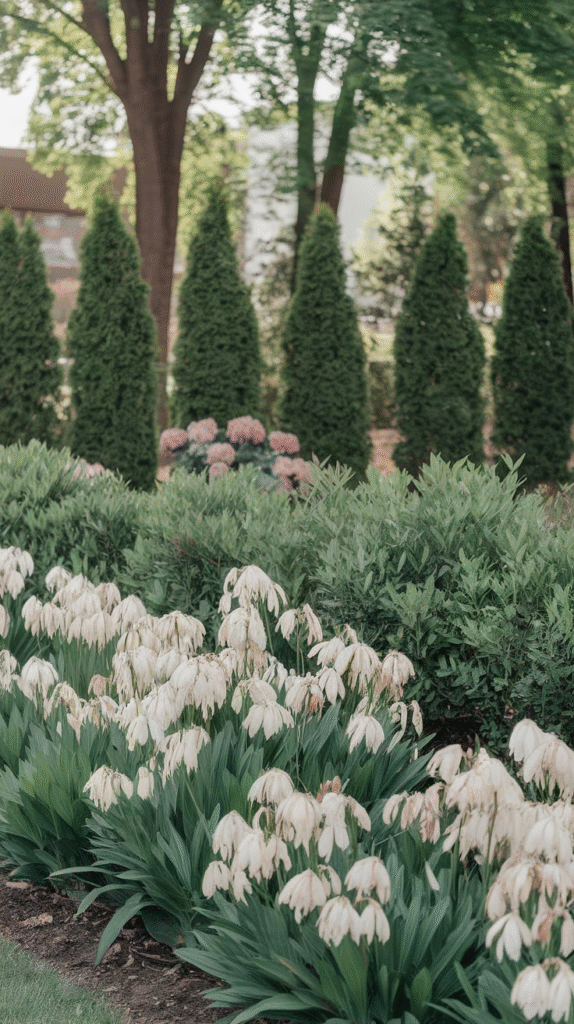
Think of this like fashion: layering adds depth and interest. In landscaping, it’s also your secret weapon for full-bodied privacy.
Start with tall trees or shrubs in the back, medium ones in the middle, and groundcovers or flowers in the front.
This creates visual interest and blocks views from multiple angles.
I did this with hydrangeas, boxwood, and a row of dwarf spruces in my own yard, and not only did I get privacy, but I also ended up with compliments from the whole block.
Incorporate Fast-Growing Privacy Plants
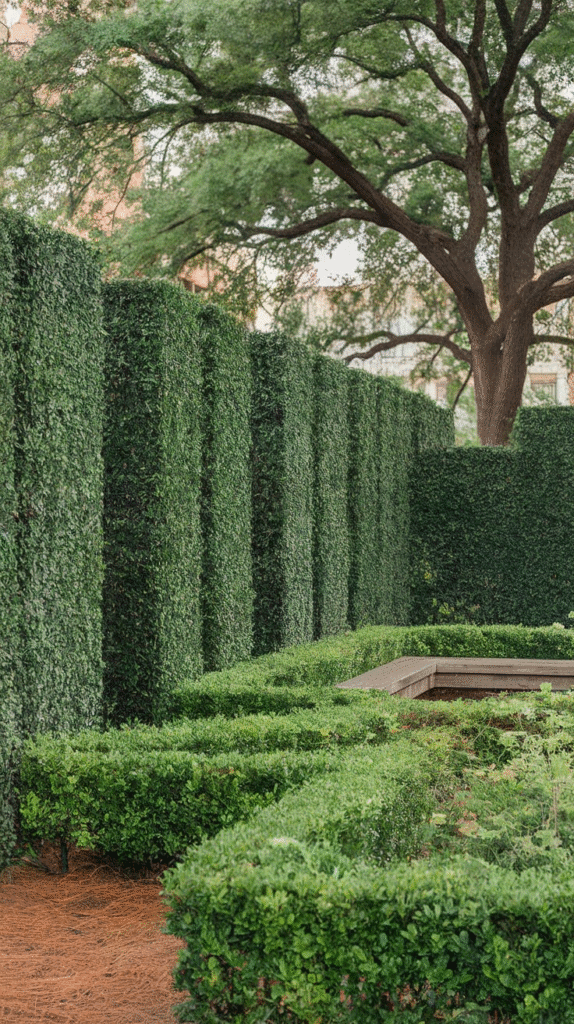
If you’re in a hurry—like “I need to block this view yesterday”—fast-growing plants are your shortcut.
Some heavy hitters include:
- Bamboo (up to 3 feet/year)
- Leyland Cypress (up to 4 feet/year)
- Hybrid Willow Trees (up to 6 feet/year)
Just be careful with bamboo—it spreads faster than gossip in a small town. Opt for clumping bamboo, which is much better behaved.
Add Privacy with Trellises and Climbing Vines

Trellises are like scaffolding for green privacy. Attach one to a wall or stand it in the garden, and train vines like clematis, ivy, or wisteria to climb it.
Within a season, you’ll have a natural green curtain that’s much prettier than any hardware-store screen.
Plus, the scent from some of these vines? It’s like wearing your favorite perfume outdoors.
Use Ornamental Grasses for Texture and Movement
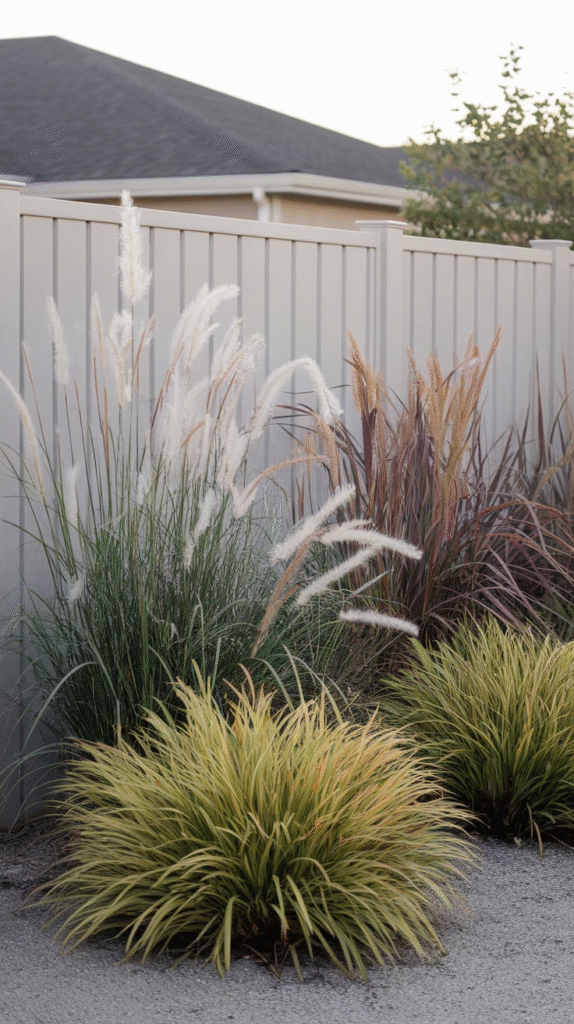
Grasses aren’t just lawn fillers—they’re the whispering sentinels of privacy design.
Tall ornamental grasses like Miscanthus, Pampas Grass, or Feather Reed Grass sway in the breeze and reach heights of 5–10 feet.
They grow fast, are low maintenance, and create a soft, waving barrier that also muffles noise.
Bonus: they turn golden in fall, so your privacy has seasonal flair.
Create Privacy with Strategic Tree Placement
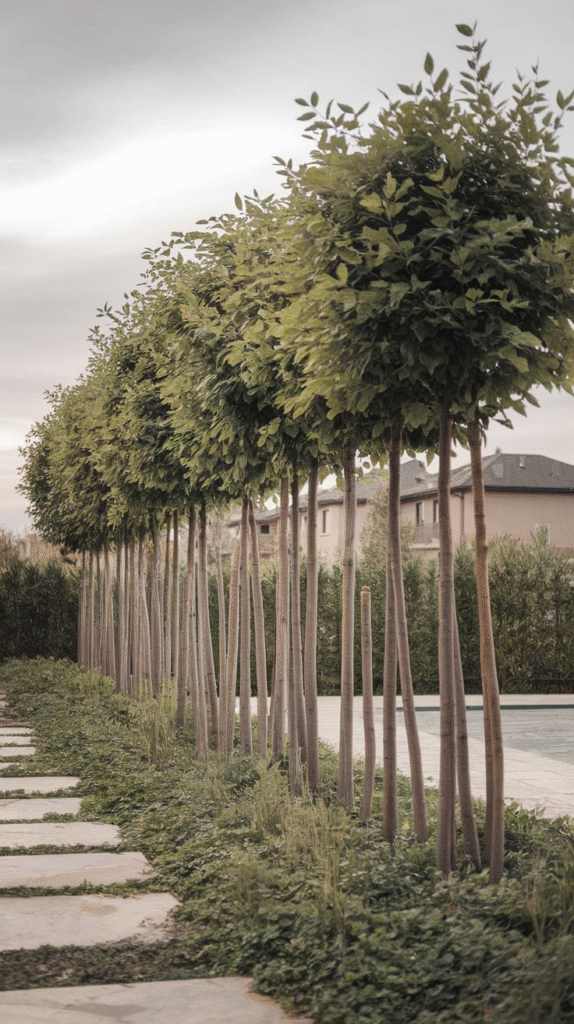
Don’t just plant a tree—plant it with purpose.
A well-placed Maple, Dogwood, or Magnolia can block second-story windows, patios, or driveways.
Look at your line of sight from key areas (like the kitchen sink or patio table), then use trees to interrupt those views like living blindfolds.
Stat Alert: According to the Arbor Day Foundation, trees can reduce noise pollution by up to 40% and block wind by up to 50%—so you’re getting more than just privacy.
Build Raised Planters for Height and Interest
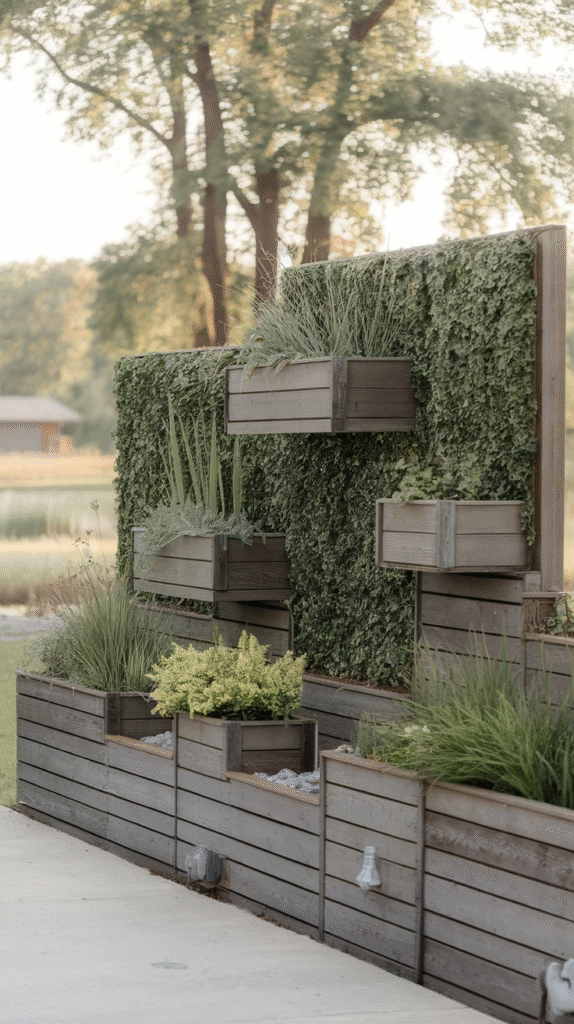
Sometimes you need height, but you don’t want to wait years. Enter: raised planters.
By elevating your plants a couple of feet off the ground, you get instant height, better drainage, and easier maintenance (your knees will thank you).
Fill them with dense shrubs like boxwood or flowering plants like lavender for privacy and curb appeal.
I built mine from reclaimed wood and filled them with herbs and roses. Now my patio smells like an apothecary and feels like a secluded café.
Install a Living Wall or Vertical Garden
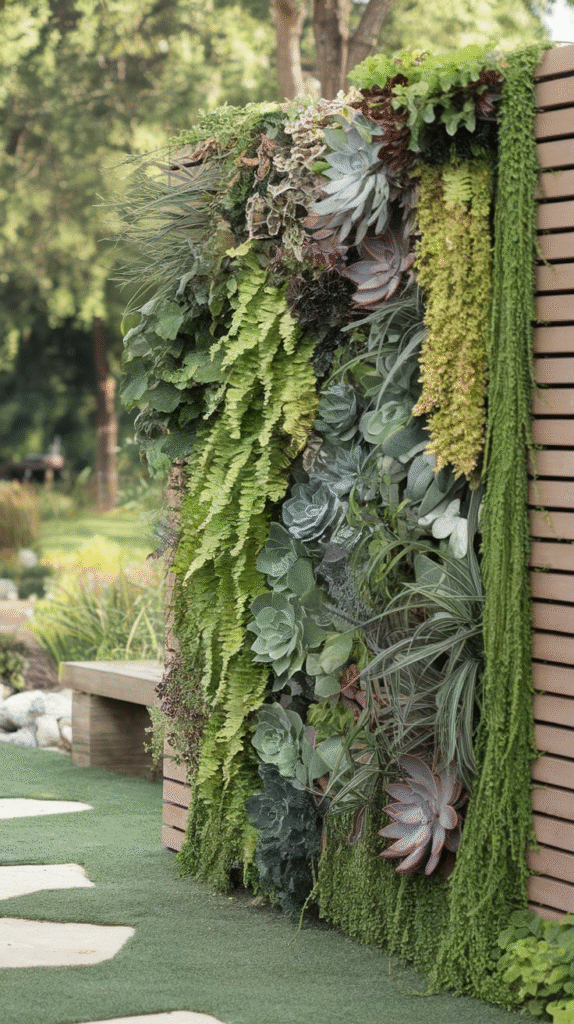
If you’re short on space but big on creativity, vertical gardens are like a green Picasso painting—functional and beautiful.
Use stacked planters, wall-mounted boxes, or modular systems.
Fill them with herbs, succulents, or ferns. Not only do they shield views, but they also add fresh oxygen and a splash of color.
And hey, NASA once said that some plants can remove indoor air toxins—so imagine what they can do outdoors.
Mix Hardscape and Softscape Elements

A privacy wall doesn’t have to be all plants or all stone—it can be both.
Combine materials like wooden slats, metal screens, stone walls, and hedges to make your barrier visually interesting.
Think of it like a mullet: structured in the front, party in the back.
Use concrete or stone walls for sound buffering, and soften them with trailing plants or vines to keep the vibe cozy instead of fortress-like.
Use Espaliered Trees Against Fences
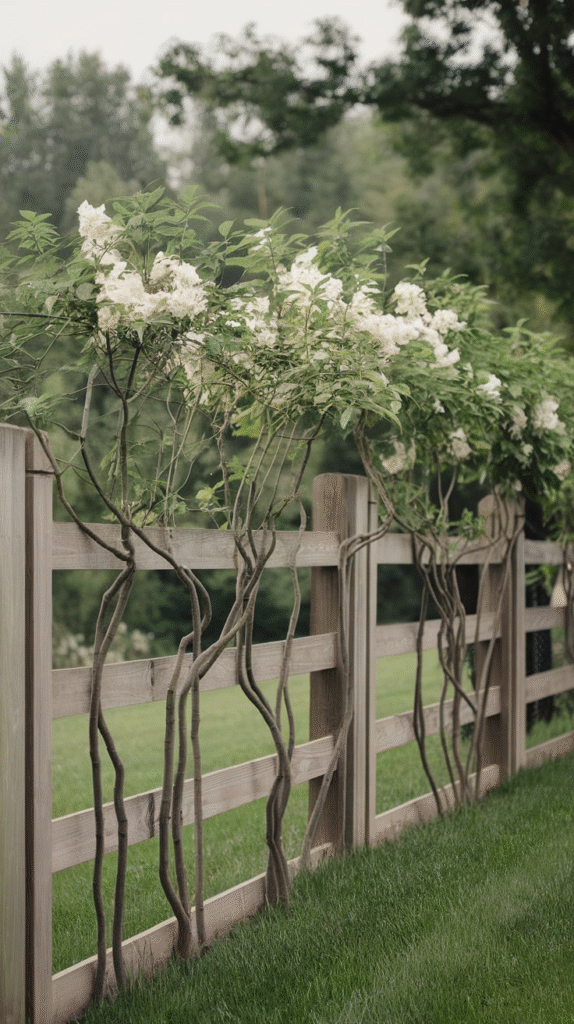
This one’s an old-world trick that feels straight out of a European garden.
Espalier is the art of training trees to grow flat against a wall or fence. You get fruit trees, privacy, and major aesthetic points all at once.
It’s perfect for narrow spaces where regular trees would feel cramped.
Try it with apple, pear, or fig trees, and you’ll be both gardener and artist.
Install Privacy Screens with Natural Materials
Want a rustic or tropical feel? Use bamboo screens, reed fencing, willow panels, or even cut branches to create natural-looking screens.
These materials blend into landscapes better than vinyl and are biodegradable, sustainable, and lightweight.
I once tied together bundles of birch branches to make a privacy fence, and it looked so cool a neighbor asked if I’d sell him a “kit.”
Grow a Privacy Hedge
Sometimes old-school is best. A thick hedge is like the original privacy filter—before it was cool.
Choose dense shrubs like:
- Boxwood (formal look)
- Privet (fast-growing)
- Photinia (with red-tinted leaves)
Trim them into shapes or let them grow naturally wild. Hedges not only block views but also act as windbreaks and sound barriers.
Add Pergolas with Drapes or Screens
A pergola adds a touch of structure, but add outdoor curtains or retractable shades, and it becomes a mini open-air sanctuary.
Great for decks, patios, or outdoor dining areas, it gives you flexibility—let the sun in or shut the world out, depending on your mood.
Plus, billowy drapes in the breeze? Instant romance.
Use Water Features to Mask Sound and Create Seclusion
Privacy isn’t just about what you see—it’s also about what you hear.
Install a fountain, waterfall, or bubbling urn to add soothing background noise and mask unpleasant sounds (hello, traffic).
A study by the University of Arizona found that natural sounds like running water can reduce stress and enhance feelings of safety and seclusion.
Create Winding Paths and Garden Rooms
Instead of a flat open space, divide your yard into zones using winding paths, shrubs, and fencing. It’s like building mini rooms outdoors.
Each room feels like a destination, and barriers between them (even partial ones) give you privacy without feeling closed in.
Think of it like a well-designed open-concept home—there’s flow, but also function.
Use Retaining Walls with Built-in Planters
Multi-tasking for the win.
A retaining wall can level your yard and double as a raised bed. Fill it with dense perennials or trailing vines to block views from the street or neighboring decks.
Choose materials that match your home’s exterior—stone, concrete, or brick—for a cohesive look.
Choose Privacy-Friendly Trees and Shrubs with Multi-Season Interest
Why settle for green all year when you can have color, texture, and flowers?
Opt for trees and shrubs that change with the seasons:
- Red Twig Dogwood (red stems in winter)
- Serviceberry (white spring flowers, berries in summer)
- Witch Hazel (fragrant winter blooms)
These plants not only keep prying eyes away, but they also make your landscape look like it’s telling a seasonal story.
Build a Natural Berm
If your yard slopes or if you’re okay with a little shovel work, a berm (aka a raised mound of earth) can give you height without hardscape.
Top it with shrubs, grasses, or low trees for a natural privacy hill. It’s effective, especially when you’re trying to block street-level views.
This was my game-changer.
I created a 3-foot berm along the edge of my yard and topped it with wildflowers and tall grass. It became a bird sanctuary and a visual barrier.
Integrate Privacy with Edible Landscaping
Why not eat your privacy?
Use fruit trees, berry bushes, tall herbs like rosemary or lemongrass, and climbing veggies like cucumbers or beans on trellises.
You’ll get both food and function.
Edible plants tend to be dense, fast-growing, and let’s be honest—snacking on your fence is a flex.
Combine Lighting for Safety and Seclusion
A well-lit space feels safe, but strategic lighting also enhances the sense of separation.
Use uplighting on trees, pathway lights, or solar lanterns to define your space while keeping the vibe intimate.
Avoid floodlights—they scream “security zone” instead of “cozy hideaway.”
Instead, think moody, warm, and subtle—like setting the stage for a backyard dinner party that goes late into the night.
Final Thought: Privacy isn’t just about keeping others out.
It’s about creating a space that feels yours—a garden where you can breathe deeply, wear your old pajamas, and maybe even dance like no one’s watching (because, well, they aren’t).
Choose what fits your style, your space, and your goals.
Whether you go for fast-growing green giants or artistic hedges with a European flair, the secret is simple: blend beauty with intention.
Now go claim your kingdom, one leaf at a time.

